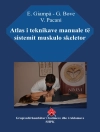This book analyzes the productivity and effectiveness of a variety of time investments in education. It explores the methods used in education to optimize the time that students are exposed to learning content. Such methods include expanding official school time, optimizing “time on task”, providing homework assignments, and creating learning opportunities beyond lesson hours. The book presents a review of earlier reviews and meta-analyses, secondary analyses of international data sets, and new meta-analyses concerning the effects of instruction time, homework and extended learning, beyond official school time. It explores the concept of time as a condition to enhance student achievement and discusses methodological issues in separating “genuine” time effects from related facets of educational quality. The book shows that the dependence of time effects on the quality of content choice and delivery raises critical questions for both researchers and policy planners. It further showsthat sophisticated research designs are required to properly assess time effects, and that policy makers should be concerned about the bluntness of time as an instrument to enhance educational productivity.
Inhaltsverzeichnis
Introduction Scheerens.- 1. State of the art of time effectiveness; Jaap Scheerens and Maria Hendriks.- Annex to Chapter 1: Operational interpretations of “time”.- 2. Time in internationally comparative studies; Jaap Scheerens, Hans Luyten and Cees Glas.- 3. Meta-analysis; Maria Hendriks, Hans Luyten, Jaap Scheerens and Peter Sleegers.- 4. Relevance of the findings for educational policy and further research; Jaap Scheerens.- Annex to chapter 3: Tables of vote counting and meta-analyses.












